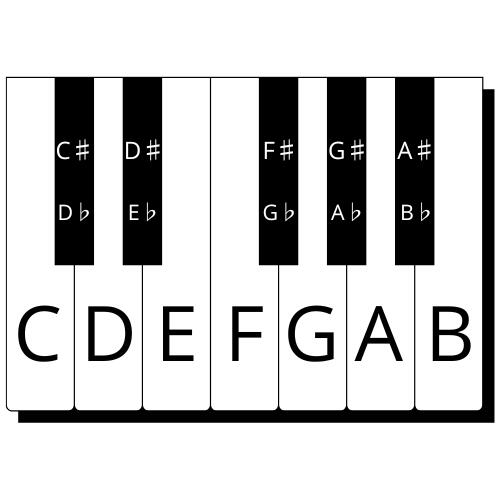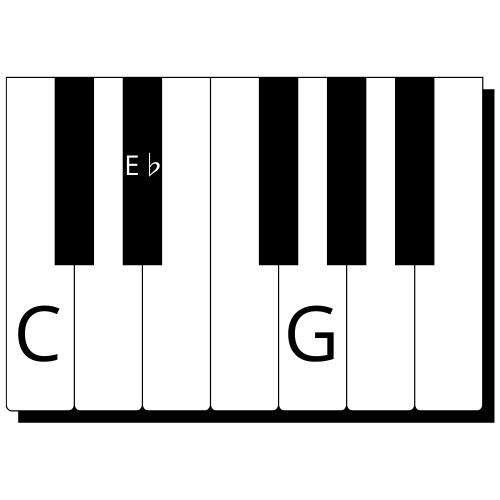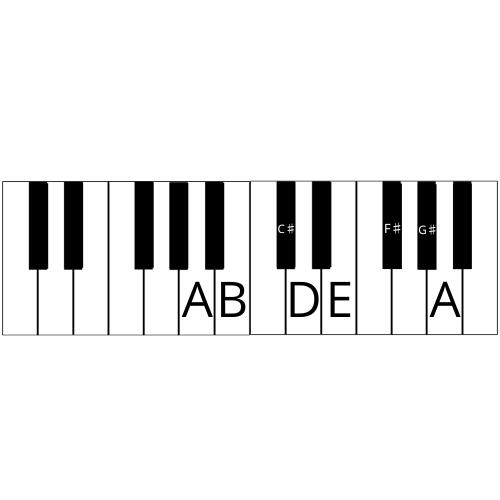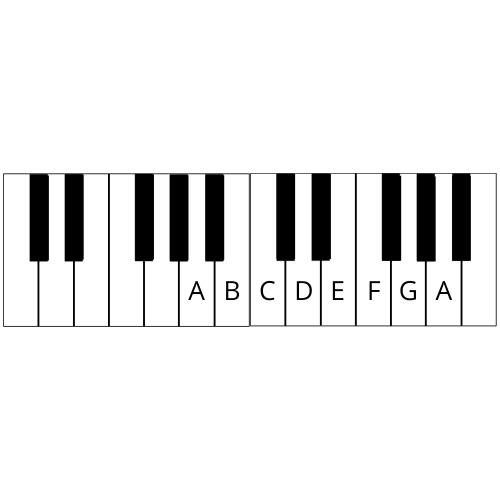Theory
Here you’ll find a summary of the theory you need to build your own tools for playing piano, consisting of:
The big 3
Notes, Chords & Scales: the DNA of the piano.Every pianist, whether they realize it or not, speaks the same language. A language built from three simple, yet infinitely powerful building blocks: notes, chords, and scales. These three are the molecules of music — the structures of sound from which all music is written.You could call them The Big 3.Together, they form the foundation of every song you’ve ever heard, every piece you’ve ever admired, every improvisation that gave you goosebumps. When you truly understand these three, you unlock the freedom to play. Music stops being complicated — it becomes familiar, logical, something you can both understand and create.Many people think they need to “learn to read notes” in order to play piano. Not true! Reading is useful, sure, but reading and playing music without understanding The Big 3 is like memorizing sentences in a language you don’t actually speak. You can repeat them, but you won’t pronounce them well — and you won’t understand what you’re really saying. When you understand notes, chords, scales, and how they connect, you stop copying and start creating. You stop reading, and start making music.Learning this theory isn’t an academic exercise — it’s freedom. You’ll start to hear music and instantly recognize what’s happening. You’ll sit at the piano and know what to play — not because you memorized it, but because you understand why it works.Let’s dive deeper into The Big 3.
Notes
Everything begins with the notes. They are the letters of the musical alphabet — the smallest meaningful units of music. Each key on your piano — all 88 of them — represents a tone: a specific pitch and a unique sound.Learning the notes might seem simple, but in reality, it’s a superpower. Once you truly memorize the keys, you stop searching and start playing, learning, and understanding what you’re doing.On every piano, there are a total of 12 notes. From those 12, we create infinite combinations. When you know where every C, F♯, and B♭ is located, you develop a spatial sense of music. Your hands and brain move together, as if you’re instinctively navigating a familiar landscape.White keys: C - D - E - F - G - A - B
Black keys: C♯ - D♯ - F♯ - G♯ - A♯ & D♭ - E♭ - G♭ - A♭ - B♭So, notes consist of white keys and black keys. Each key represents a tone that is one semitone apart from the next. Move one key up or down — black or white — and you’ve moved one semitone higher or lower.The five black keys can be seen as the white keys, but either raised or lowered by a semitone. We call this ‘is’ (sharp, ♯) when raised and ‘es’ (flat, ♭) when lowered. For example, a raised D becomes D♯, and a lowered B becomes B♭.Below, you can see one full octave, including all 12 notes. The piano keyboard is made up of 7 of these octaves, numbered from C1 to C7.

Chords
Chords are groups of notes that come together to form harmony.
Play three or more notes at the same time, and you have a chord, a sound with emotion and depth.The magic of chords is that they feel like something: happy, sad, dreamy, dark, unresolved, or even mysterious. They are the emotional geometry of music. The way you move from one chord to another creates tension and release, the heartbeat of musical storytelling.Every chord is built on intervals, which are the distances between notes. The most basic chord, the triad, is made up of the 1st, 3rd, and 5th notes of a scale. That’s all it takes, and from this simple pattern springs an infinite world of sound: major, minor, diminished, augmented, and more. Each chord adds a different color to your musical palette.To understand chords is to understand harmony. When you look at a song, you no longer see isolated notes, you see architecture. You can predict what comes next, reharmonize, and freely improvise within the structure.Once you start recognizing chords automatically, your playing becomes fluent. You’ll be able to build songs, harmonize melodies, and transform chord progressions into something uniquely yours. Chords are the foundation of music, they make it sound full and alive.A chord usually consists of multiple notes, most often three (a triad), but sometimes two to five. The most common types are major and minor chords. The difference between major and minor lies in the middle note: it’s raised or lowered by one semitone. See the images below for an example.

C major chord (C)

C minor chord (Cm)
Scales
Scales, also called keys, are the most important element within the Big 3. If notes are your alphabet and chords are your words, then scales are your dictionary and grammar rules, they make everything understandable and hold it all together.Notes and chords fit within a certain scale. A scale is simply a series of notes that sound good together, arranged in steps. The most well-known are the major and minor scales. But there are many more: harmonic, pentatonic, blues, jazz, modal... each one opens up its own little universe of sound and color.Why learn scales?
Because they define the context. A scale tells you which notes sound good together, which chords belong to it, and how to move between them. You’ll also quickly notice which notes or chords fall outside the scale and therefore sound off. Chords live inside scales; each chord is like a snapshot of a few notes from a larger structure.
Every scale contains seven basic chords, connected to the seven notes within it.Improvising = Navigating
The scale is your map, and your fingers are the travelers. You can move with logic or with feeling, but always with direction. That’s why scales are essential for improvisation: they give you boundaries within which freedom can thrive.Practicing scales also builds technique: balance, coordination, and muscle memory.
Beyond technique, you start to feel the emotion of music. Each scale has its own personality: the sadness of A minor, the clarity of C major, the tension of G minor.The Major & Minor Scales
Below are the scales of A major and A minor. The difference between major and minor lies in the spacing between the notes. Both follow the same logical steps and rules defined by whole tones and semitones (a whole tone = 1, a semitone = 0.5). The formulas are like this:Major: 1 - 1 - 0.5 - 1 - 1 - 1 - 0.5
Minor: 1 - 0.5 - 1 - 1 - 0.5 - 1 - 1

A major scale (A)

A minor scale (Am)
Summary
In the end, it’s important to know these three elements — but even more important to understand them. Memorizing them works, but you truly learn when you understand how music is built.Once you realize that every song is based on just one scale — within which only seven notes and seven chords fit — everything starts to make sense. You see that each song has a root note, and that most use just three or four chords.What makes this so powerful is that when you truly know a scale and its contents, it gives you the ability to improvise. Whether that’s over an existing song or through freely exploring within the scale yourself, both give you an incredible sense of musical freedom and creativity.
Sources
For further exploration, explanations, and additional knowledge on these topics, click the links below:
follow the music
© 2025 Alex Vogel


